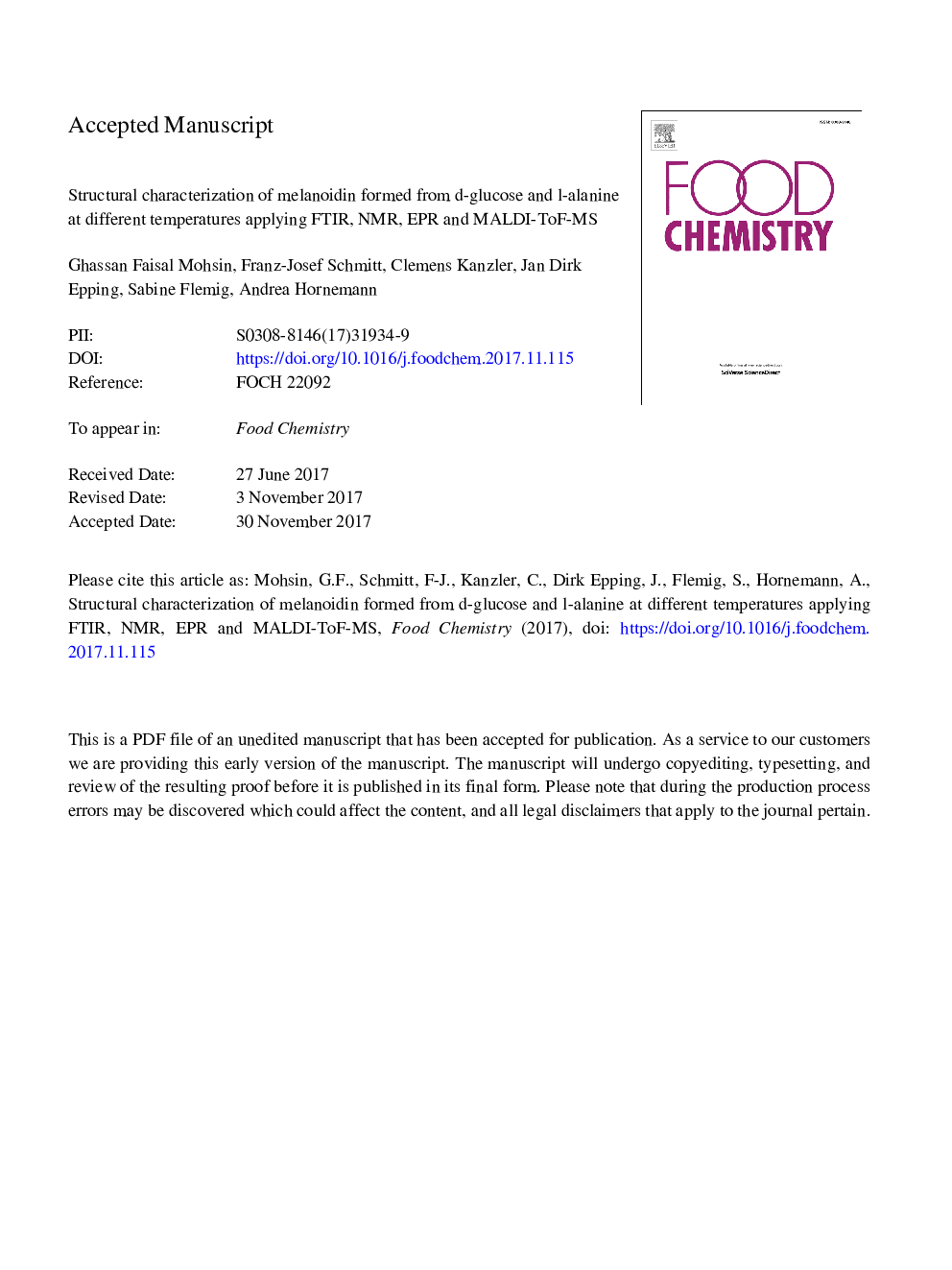| Article ID | Journal | Published Year | Pages | File Type |
|---|---|---|---|---|
| 7586479 | Food Chemistry | 2018 | 33 Pages |
Abstract
The aim of this study was to identify specific chemical bonds and characteristic structures in melanoidins formed from d-glucose and l-alanine between 130 and 200â¯Â°C. The results might be used to control the type and amount of melanoidin produced during food processing. For this purpose, complementary techniques, such as FTIR, NMR, EPR, and MALDI-ToF, were employed. At 160â¯Â°C color, solubility and UV/Vis absorption change characteristically and consequently, structural transformations could be observed in FTIR and NMR spectra. For example, sharp signals of N-H, C-N, and C-H oscillations in the l-alanine spectrum are prone to inhomogeneous broadening in melanoidins prepared above 150â¯Â°C. These changes are caused due to formation of heterogeneous macromolecular structures and occur during condensation reactions that lead to an increasing loss of water from the melanoidins with increasing temperatures. Additionally, MALDI-ToF-MS indicates the polymerization of glyoxal/glyoxylic acid and EPR shows the formation of radical structures.
Keywords
nuclear magnetic resonance (spectroscopy)l-GlycineSECTOFALAD-glucoseGlcCP/MASD-galactosel-AlanineUV/VisElemental analysisNMREPRtime of flightFTIREPR spectroscopyFTIR spectroscopyMass spectrometryNMR spectroscopymatrix assisted laser desorption/ionizationMALDIMALDI-TOF-MSMelanoidinMaillard reactionSize exclusion chromatographyGalGly
Related Topics
Physical Sciences and Engineering
Chemistry
Analytical Chemistry
Authors
Ghassan Faisal Mohsin, Franz-Josef Schmitt, Clemens Kanzler, Jan Dirk Epping, Sabine Flemig, Andrea Hornemann,
